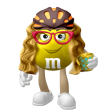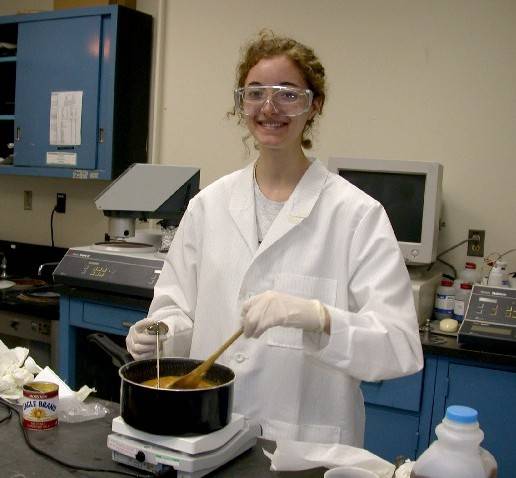


MILC SHAKE demonstrative code, for MD, mesoscopic models, robotics, animation.
At Imperial, I investigated a model for polymers. The model entails taking a linear molecule and approximating it as a long, continuous, elastic filament of infinitesimal cross-section. Modeling the dynamics of the underlying space curve under the influence of elastic and other additional forces will then determine the behavior of the molecule. The work was fun, but the equations of motion I derived were nearly impossible to integrate numerically to realize the dynamics. It served as a motivation to develop 'smarter' models for soft matter applications.
At Los Alamos, I worked in ISR-6 developing photonic crystal devices for beam applications during the summers of 2005 and 2006.
The first major project was developing a 100 GHz traveling wave tube (TWT) for a flat beam. The final design was presented at SPIE's 2006 Optics West conference. Fabrication difficulties led us to later opt for an omniguide TWT instead of a holey fiber. The omniguide has been built, and cold test results are indicative of predicted performance.
I also helped design a silicon channel drop filter for spectroscopy purposes, coined "spectrometer on a chip". This project received funding for fabrication and testing in 2007. The device for operation in the 100 GHz regime was fabricated using an process that etches along specific planes of silicon. The results from testing were promising. Due to undercut of the etch, the performance of the final product did not meet standards. This problem came about because the feature length of 100 GHz devices is quite big for that particular fabrication method. The same spectrometer design scaled for use in Terahertz frequency is currently being fabricated using the same method, and the equipment to test at this frequency is being acquired. We expect a better performance from the terahertz device. Stay tuned!
For my senior design project, I investigated dislocation behavior of tungsten under applied stress via atomistic modeling using a bond-order potential. This work was carried out with Roman Gröger and Vaclav Vitek at Penn.
I spent the summer of 2004 at General Motors looking into phase regions of a metal hydride system for potential use as hydrogen storage materials, under the supervision of Michael Balogh and Greg Meisner.
For a materials science laboratory class, I took a closer look at my mother's popular caramel (without pecans, for the purposes of this project). The recipe she uses is great, but when it's not cooked at the right temperature for the right amount of time, the caramel will phase separate into sugar spherulites embedded in a sugar-butter polymer matrix over the course of about week. I used XRD to characterize the crystal structure of the spherulites compared to the pure ingredients, and I used IR spectroscopy to characterize the chemical composition of various samples. Model systems of pairs of ingredients were considered. I identified the polymerization reaction and a side reaction. Success, however, was not without cost: one trough-type ZnSe horizontal ATR cell perished. And, due to reckless data management, the only result I still have from this project is the following photographic evidence.
